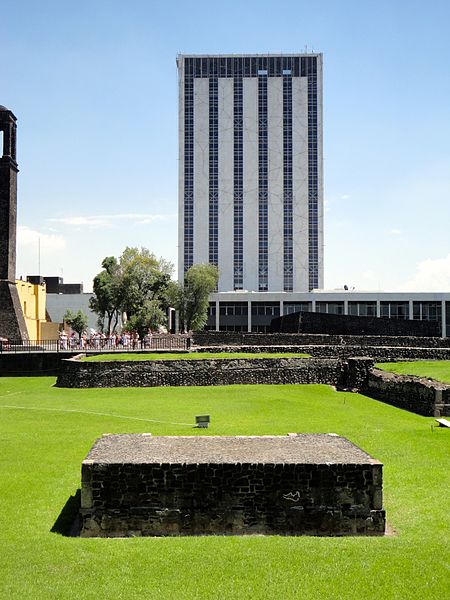
The Tlatelolco University Cultural Center (Centro Cultural Universidad Tlatelolco) is a multidisciplinary complex including a museum visible from the Plaza de las Tres Culturas. Part of the National Autonomous University (UNAM), the Center was created to encourage the investigation, analysis and diffusion of art, history, and political resistance.
Having opened in 2002, the marble tower was designed by the architect, Pedro Ramírez Vázquez. It’s often visited in combination with the Plaza de las Tres Culturas and many of the surrounding sites of interest. Within the complex are a number of valuable cultural collections.
The entire Tlatelolco University Cultural Center is best known as home to the memorial. This is strongly symbolic of the historical tension between the UNAM and the Federal Government. The conflict culminated in the tragic massacre of students in 1968, in the Plaza de las Tres Culturas
The museum focuses on the archaeology of the ancient city and marketplace. About 400 artifacts have been collected from the ancient separatist Tlatelolco site.
The Stavenhagen Collection is focused on address a pre-Hispanic past from an artistic perspective. Artifacts are displayed with emphasis placed on their forms, expressiveness, harmony, and composition. The permanent exhibition allows visitors to appreciate the diversity, richness, and creativity of Meso-American peoples. The more than 500 works were collected by Kurt and Lore Stavenhagen. Their son, the renowned sociologist Rodolfo Stavenhagen, donated the collection.
The center also hosts a curatorial laboratory for collections of art, scientific material, history, and the UNAM collections. These are shared in temporary exhibitions. Collections include:
• The photographic archive of the architect, Mario Pani
• The archive of cartoonist, Rogelio Naranjo
• The archive of the photographer, Pedro Valtierra
• And some 10,000 items from the collection of Juan Acha, a theorist of Latin American art.
The center organizes ongoing visits and workshops for the general public and for other institutions. Some are aimed at children, but programs have included tours of the broader neighborhood.
A lighting installation by United States artist, Thomas Glassford, lights up the center at night, and has made it one of the most prominent points along the city’s nighttime skyline. Glassford refers to the Mexica god, Xipe Tótec (“The Flayed Lord” or “The Night Drinker”), who removed his skin to feed humanity.
The Tlatelolco University Cultural Center also offers informal cultural education. This can include workshops for children, youth, and adults.
Since its creation, the Tlatelolco University Cultural Center has been a major player in presenting art cinema. Focused on avant-garde film works and classics of Mexican and world cinema, they’ve hosted many of the most prominent film festivals in the city, and screen movies throughout the year.
 ccutlatelolco@gmail.com
ccutlatelolco@gmail.com
 55 5117 2818
55 5117 2818
 https://tlatelolco.unam.mx/
https://tlatelolco.unam.mx/

Nearest at 0.04 kms.
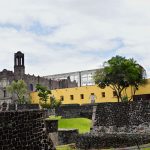
Nearest at 0.04 kms.
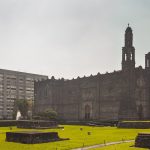
Nearest at 0.07 kms.
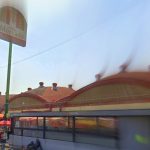
One of the grand old markets of Lagunilla in a cavernous historic building . . .
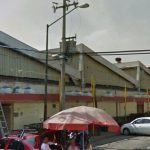
Two magnificent fixed markets with the northern reaches of Tepito . . .
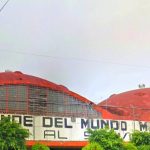
A massive market for footwear in fabulous Lagunilla/Tepito.
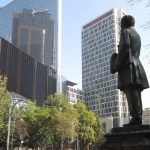
The seat of Japan's diplomatic mission to Mexico on Paseo de la Reforma.

The center of Azcapotzalco has a teeming old market...